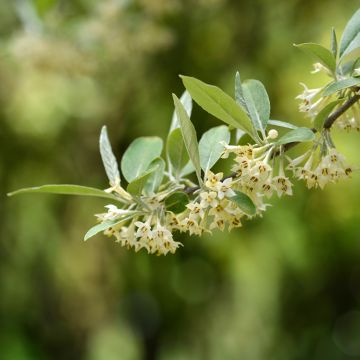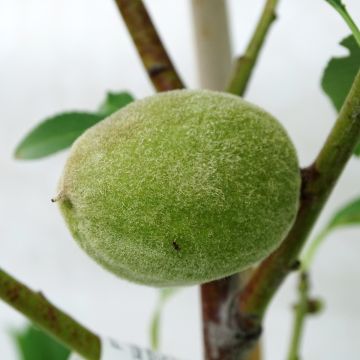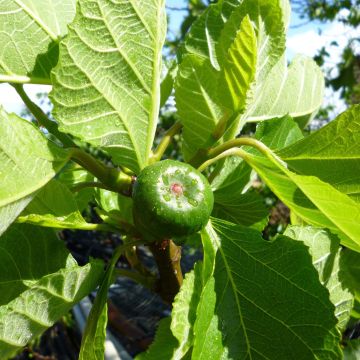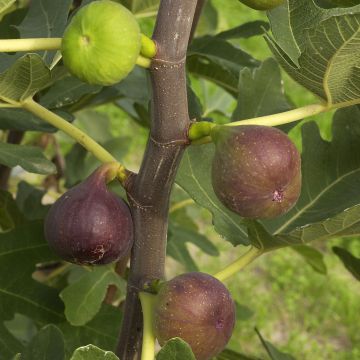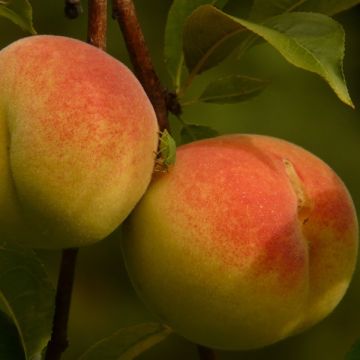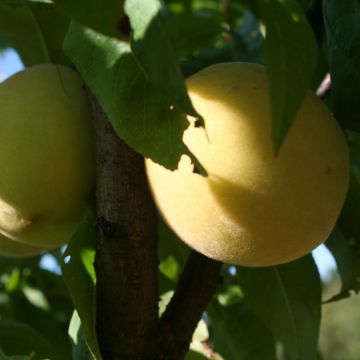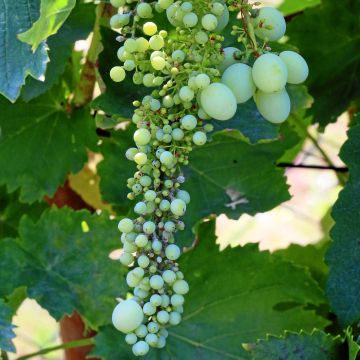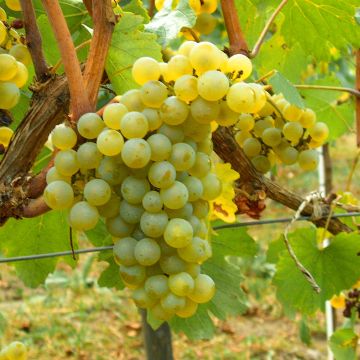

Sweet Orange - Citrus sinensis
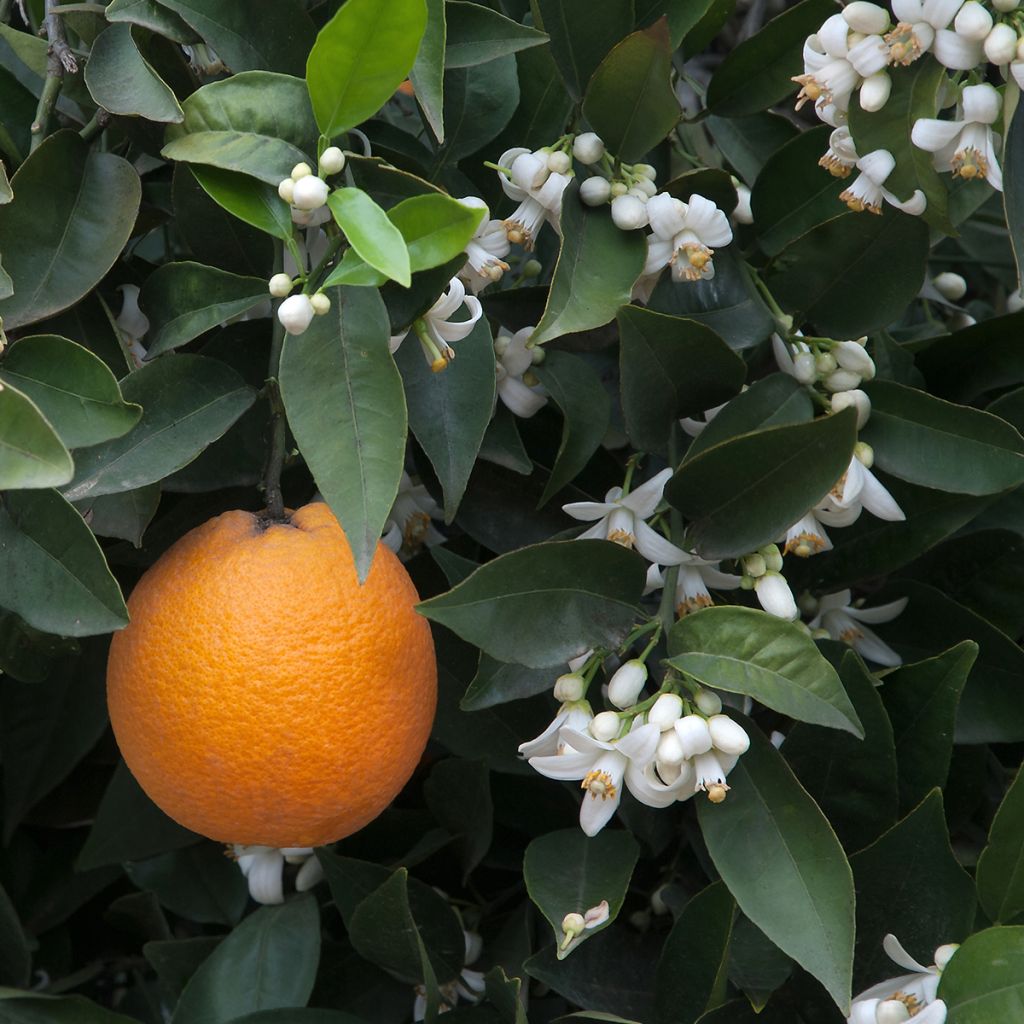

Sweet Orange - Citrus sinensis
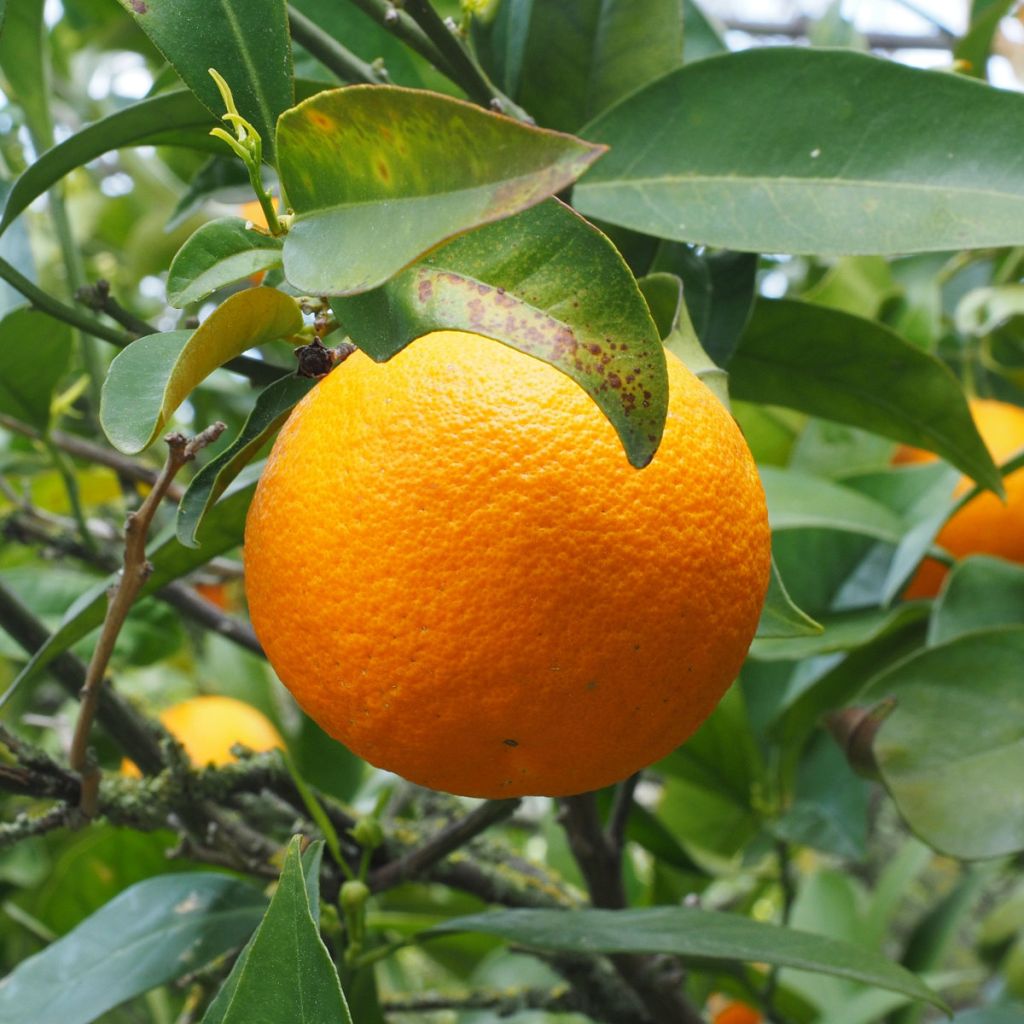

Sweet Orange - Citrus sinensis
Sweet Orange - Citrus sinensis
Citrus sinensis
Sweet Orange, Navel Orange
Appalling delivery: container exploded, orange tree damaged. Reported, response: it's not a big deal... just water it a lot. In short, move along, there's nothing to see.
PFM, 04/02/2024
Special offer!
Receive a €20 voucher for any order over €90 (excluding delivery costs, credit notes, and plastic-free options)!
1- Add your favorite plants to your cart.
2- Once you have reached €90, confirm your order (you can even choose the delivery date!).
3- As soon as your order is shipped, you will receive an email containing your voucher code, valid for 3 months (90 days).
Your voucher is unique and can only be used once, for any order with a minimum value of €20, excluding delivery costs.
Can be combined with other current offers, non-divisible and non-refundable.
Home or relay delivery (depending on size and destination)
Schedule delivery date,
and select date in basket
This plant carries a 6 months recovery warranty
More information
We guarantee the quality of our plants for a full growing cycle, and will replace at our expense any plant that fails to recover under normal climatic and planting conditions.
Description
The Orange Tree is a beautiful fruit tree with a rounded silhouette and fast growth. It produces oranges ranging from 7 to 10 cm (3 to 4in) in diameter with juicy, pulpy flesh and a balance between sweetness and acidity. Their orange colour is due to the first frosts but is not a sign of ripeness. Harvesting takes place from November to March.
The Orange Tree is a tree native to Southeast Asia. It was introduced to Southern Europe, along the Mediterranean shores, in the year 1000 by the Arabs.
Cultivated for its ornamental qualities and its oranges, the Orange Tree can reach a height of 7 to 8 m (23 to 26ft) in open ground. Its spreading rounded habit highlights its beautiful dense and evergreen foliage. Its leaves are elongated, pointed, glossy on the upper side, ranging from bright green to deep green and highly fragrant.
It produces small white highly fragrant flowers followed by round oranges, ranging from 7 to 10 cm (3 to 4in) in diameter, with juicy, pulpy flesh and a balance between sweetness and acidity. Their orange colour is due to the first frosts but is not a sign of ripeness. Harvesting takes place from November to March.
Like all citrus trees, the Orange Tree contains essential oil pockets in its leaves, flowers, and fruits, often visible to the naked eye, from which essential oil is extracted through distillation (flowers and leaves) or through pressing (zest).
Most citrus trees thrive in open ground in Mediterranean coastal regions where they find the necessary warmth all year round. Elsewhere, they will be grown in pots and stored away at the first cold spells. The Orange Tree is not very hardy and starts to suffer from cold temperatures from -5°C (23°F) to -10°C (14°F).
The Orange Tree blooms from March to July and bears fruit from November to March. Fruit ripening takes between 10 and 12 months. It is a self-fertile bush, which means that a single individual is enough for complete pollination and fruit. However, if your citrus tree remains indoors permanently, you will need to occasionally let the pollinators do their work or perform hand pollination with a brush.
Report an error about the product description
Sweet Orange - Citrus sinensis in pictures


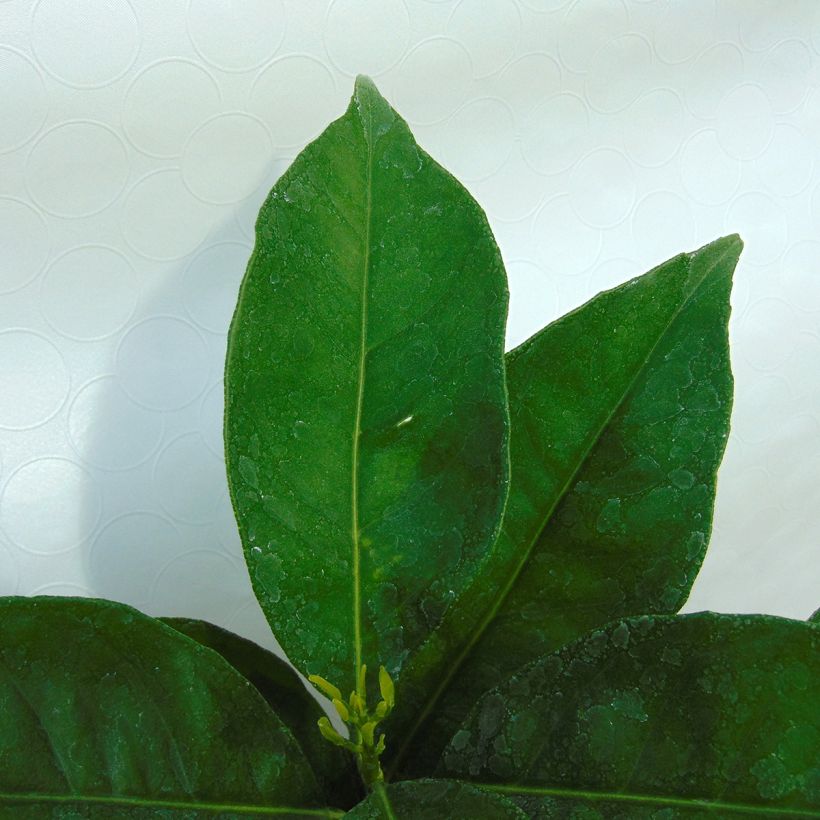





Plant habit
Fruit
Flowering
Foliage
Botanical data
Citrus
sinensis
Rutaceae
Sweet Orange, Navel Orange
Southeast Asia
Planting and care
Planting in open ground: Citrus trees like slightly acidic and non-limestone soils. It is only reasonable to plant them in open ground if you live on a Mediterranean coastal strip. The best time to plant is in early spring, in March and April. Start by watering the root ball to moisten it. Dig a hole four to five times the volume of the root ball. If your soil is limestone, add some ericaceous compost. If it is heavy and compact, lighten it with one-third sand. Citrus trees do not like limestone soils or poorly draining soils as they dislike having their feet in stagnant water. Be careful not to bury the collar, then firm well. Citrus trees are naturally hungry: consider amending with well-decomposed compost with humus or with "citrus" fertiliser. Choose a sunny but not scorching location for your bush, sheltered from the wind to prevent the foliage from drying out and away from sea spray.
Pot planting: in all other regions, Citrus trees will be planted in pots stored in an orangery or cold greenhouse in winter and outdoors as soon as frost is over. Pot planting or repotting takes place in late summer. Choose a pot slightly larger than the root system, as citrus trees do not like to feel cramped. Moisten the root ball well. To improve the drainage capacity of the mix, line the bottom of the pot with clay pebbles. Loosen the root ball and mix two-thirds garden soil with one-third "citrus" potting soil. Water generously. Use pots made of breathable materials or terracotta.
Citrus trees need a lot of water to thrive. Your Citrus tree should be watered every day and the soil should remain moist at all times. Regularly provide it with the fertiliser it needs: every 6 months for slow-release granular fertiliser or every 3 waterings for liquid fertiliser.
Planting period
Intended location
Care
-
, onOrder confirmed
Reply from on Promesse de fleurs
Similar products
Haven't found what you were looking for?
Hardiness is the lowest winter temperature a plant can endure without suffering serious damage or even dying. However, hardiness is affected by location (a sheltered area, such as a patio), protection (winter cover) and soil type (hardiness is improved by well-drained soil).

Photo Sharing Terms & Conditions
In order to encourage gardeners to interact and share their experiences, Promesse de fleurs offers various media enabling content to be uploaded onto its Site - in particular via the ‘Photo sharing’ module.
The User agrees to refrain from:
- Posting any content that is illegal, prejudicial, insulting, racist, inciteful to hatred, revisionist, contrary to public decency, that infringes on privacy or on the privacy rights of third parties, in particular the publicity rights of persons and goods, intellectual property rights, or the right to privacy.
- Submitting content on behalf of a third party;
- Impersonate the identity of a third party and/or publish any personal information about a third party;
In general, the User undertakes to refrain from any unethical behaviour.
All Content (in particular text, comments, files, images, photos, videos, creative works, etc.), which may be subject to property or intellectual property rights, image or other private rights, shall remain the property of the User, subject to the limited rights granted by the terms of the licence granted by Promesse de fleurs as stated below. Users are at liberty to publish or not to publish such Content on the Site, notably via the ‘Photo Sharing’ facility, and accept that this Content shall be made public and freely accessible, notably on the Internet.
Users further acknowledge, undertake to have ,and guarantee that they hold all necessary rights and permissions to publish such material on the Site, in particular with regard to the legislation in force pertaining to any privacy, property, intellectual property, image, or contractual rights, or rights of any other nature. By publishing such Content on the Site, Users acknowledge accepting full liability as publishers of the Content within the meaning of the law, and grant Promesse de fleurs, free of charge, an inclusive, worldwide licence for the said Content for the entire duration of its publication, including all reproduction, representation, up/downloading, displaying, performing, transmission, and storage rights.
Users also grant permission for their name to be linked to the Content and accept that this link may not always be made available.
By engaging in posting material, Users consent to their Content becoming automatically accessible on the Internet, in particular on other sites and/or blogs and/or web pages of the Promesse de fleurs site, including in particular social pages and the Promesse de fleurs catalogue.
Users may secure the removal of entrusted content free of charge by issuing a simple request via our contact form.
The flowering period indicated on our website applies to countries and regions located in USDA zone 8 (France, the United Kingdom, Ireland, the Netherlands, etc.)
It will vary according to where you live:
- In zones 9 to 10 (Italy, Spain, Greece, etc.), flowering will occur about 2 to 4 weeks earlier.
- In zones 6 to 7 (Germany, Poland, Slovenia, and lower mountainous regions), flowering will be delayed by 2 to 3 weeks.
- In zone 5 (Central Europe, Scandinavia), blooming will be delayed by 3 to 5 weeks.
In temperate climates, pruning of spring-flowering shrubs (forsythia, spireas, etc.) should be done just after flowering.
Pruning of summer-flowering shrubs (Indian Lilac, Perovskia, etc.) can be done in winter or spring.
In cold regions as well as with frost-sensitive plants, avoid pruning too early when severe frosts may still occur.
The planting period indicated on our website applies to countries and regions located in USDA zone 8 (France, United Kingdom, Ireland, Netherlands).
It will vary according to where you live:
- In Mediterranean zones (Marseille, Madrid, Milan, etc.), autumn and winter are the best planting periods.
- In continental zones (Strasbourg, Munich, Vienna, etc.), delay planting by 2 to 3 weeks in spring and bring it forward by 2 to 4 weeks in autumn.
- In mountainous regions (the Alps, Pyrenees, Carpathians, etc.), it is best to plant in late spring (May-June) or late summer (August-September).
The harvesting period indicated on our website applies to countries and regions in USDA zone 8 (France, England, Ireland, the Netherlands).
In colder areas (Scandinavia, Poland, Austria...) fruit and vegetable harvests are likely to be delayed by 3-4 weeks.
In warmer areas (Italy, Spain, Greece, etc.), harvesting will probably take place earlier, depending on weather conditions.
The sowing periods indicated on our website apply to countries and regions within USDA Zone 8 (France, UK, Ireland, Netherlands).
In colder areas (Scandinavia, Poland, Austria...), delay any outdoor sowing by 3-4 weeks, or sow under glass.
In warmer climes (Italy, Spain, Greece, etc.), bring outdoor sowing forward by a few weeks.
































